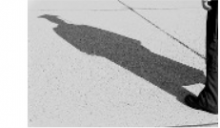 PhD defense of Marie-Laure AIX on 12/07/2023
PhD defense of Marie-Laure AIX on 12/07/2023


PhD defense of Marie-Laure AIX of EPSP team, will take place on Thursday, December 7, 2023 at 2pm:
" Air pollution, mobility and health in the Grenoble area. "
-
Place: Salle des thèses du bâtiment Boucherle, 5 Chemin Duhamel,
Facultés de Médecine et Pharmacie, 38700 La Tronche
Jury:
- M. Dominique J. BICOUT, Université Grenoble Alpes, Supervisor
- M. Pietro SALIZZONI, École Centrale de Lyon, Reporter
- Mme Isabella ANNESI-MAESANO, INSERM, Reporter
- M. Bruno DEGANO, Université Grenoble Alpes, Examiner
- Mme Nathalie REDON, IMT Lille Douai, Examiner
- M. Laurent SPINELLE, INERIS, Examiner
- Mme Claire CHAPPAZ, Atmo Auvergne-Rhône-Alpes, Invited
 Key words
Key words
air pollution, mobility, health risks, low-cost sensors, particulate matter, Grenoble
 Abstract
Abstract
Air pollution is a global public health issue responsible for an important part of mortality and various
chronic diseases. It is therefore crucial to measure it as precisely as possible. The objectives of this thesis were to identify health risks associated with air pollutants in Grenoble (France), and to measure particulate matter (PM), recognized as a major contributor to mortality, as accurately as possible. This works starts with a health risks analysis during the COVID-19 period, showing significant changes in pollutants levels: NO2 (- 32%), PM2.5 (- 22%), PM10 (- 15%), and O3 (+ 11%). These variations led to short-term reductions in health risks related to PM 2.5 (- 3 % decrease in child asthma emergency room visits) and NO2 (- 2% decrease in respiratory disease hospitalizations). In the long term, PM2.5 also played a major role, reducing all-cause mortality (- 3%), lung cancer (- 2%), and low birth weights (- 8%), followed by NO2 (- 1% non-accidental mortality). Due to their significant impact on health risks, the thesis then focused on PM2.5 and PM1 (PM <1 μm). In order to estimate PM levels and their heterogeneity in Grenoble, we assembled low-cost sensors (LCS) with the goal to deploy them in the city, in addition to the reference stations of Atmo Auvergne-Rhône-Alpes. The LCS were first calibrated using methods including machine-learning, while excluding days with Saharan dust events that impacted LCS’ ability to properly measure PM2.5. Given the poor performance of the LCS to measure PM 10, we proceeded without including them. A fixed network of 8 LCS was subsequently deployed in Grenoble, highlighting temporal and spatial disparities, notably a hotspot in the city center with higher PM1 ratios to the reference (PM1 ratio = PM1 / PM1Ref). An experiment using mobile LCS also indicated the importance of transport mode, travel time, and site, the latter being influenced by traffic and/or street layout. Cycling exhibited the highest PM 1 ratios, followed by walking (- 2%), bus (- 9%), and tramway (- 14%). For inhaled doses, the order was different, with walking first, followed by cycling (- 2%), bus (- 26%), and tram (- 32%). This thesis underscores the importance of considering temporal and spatial variations in pollutants when calculating health risks and demonstrates the utility of LCS in estimating this variability. In conclusion, practical recommendations are given for assembling, calibrating, and deploying LCS that can benefit both scientists and citizen scientists.
